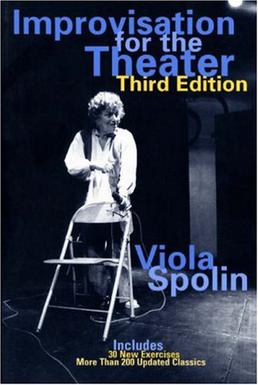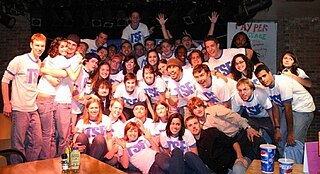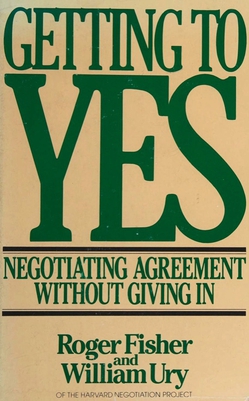Related Research Articles

Improvisational theatre, often called improvisation or improv, is the form of theatre, often comedy, in which most or all of what is performed is unplanned or unscripted, created spontaneously by the performers. In its purest form, the dialogue, action, story, and characters are created collaboratively by the players as the improvisation unfolds in present time, without use of an already prepared, written script.
Improvisation, often shortened to improv, is the activity of making or doing something not planned beforehand, using whatever can be found. The origin of the word itself is in the Latin "improvisus", which literally means un-foreseen – but it is also related to both the old French word "emprouer" and the English "improve", to improve. Improvisation in the performing arts is a very spontaneous performance without specific or scripted preparation. The skills of improvisation can apply to many different faculties across all artistic, scientific, physical, cognitive, academic, and non-academic disciplines; see Applied improvisation.
Bohm Dialogue is a freely flowing group conversation in which participants attempt to reach a common understanding, experiencing everyone's point of view fully, equally and nonjudgmentally. This can lead to new and deeper understanding. The purpose is to solve the communication crises that face society, and indeed the whole of human nature and consciousness. It utilizes a theoretical understanding of the way thoughts relate to universal reality. It is named after physicist David Bohm who originally proposed this form of dialogue.
Within the realm of communication studies, organizational communication is a field of study surrounding all areas of communication and information flow that contribute to the functioning of an organization. Organizational communication is constantly evolving and as a result, the scope of organizations included in this field of research have also shifted over time. Now both traditionally profitable companies, as well as NGO's and non-profit organizations, are points of interest for scholars focused on the field of organizational communication. Organizations are formed and sustained through continuous communication between members of the organization and both internal and external sub-groups who possess shared objectives for the organization. The flow of communication encompasses internal and external stakeholders and can be formal or informal.
Free writing is traditionally regarded as a prewriting technique practiced in academic environments, in which a person writes continuously for a set period of time with limited concern for rhetoric, conventions, and mechanics, sometimes working from a specific prompt provided by a teacher. While free writing often produces raw, or even unusable material, it can help writers overcome writing blocks and build confidence by allowing them to practice text-production phases of the writing process without the fear of censure. Some writers even use the technique to collect initial thoughts and ideas on a topic, often as a preliminary to formal writing.

Nonviolent Communication (NVC) is an approach to enhanced communication, understanding, and connection based on the principles of nonviolence and humanistic psychology. It is not an attempt to end disagreements, but rather a way that aims to increase empathy and understanding to improve the overall quality of life. It seeks empathic dialogue and understanding among all parties. Nonviolent Communication evolved from concepts used in person-centered therapy, and was developed by clinical psychologist Marshall Rosenberg beginning in the 1960s and 1970s. There are a large number of workshops and clinical materials about NVC, including Rosenberg's book Nonviolent Communication: A Language of Life. Marshall Rosenberg also taught NVC in a number of video lectures available online; the workshop recorded in San Francisco is the most well-known.
Creativity techniques are methods that encourage creative actions, whether in the arts or sciences. They focus on a variety of aspects of creativity, including techniques for idea generation and divergent thinking, methods of re-framing problems, changes in the affective environment and so on. They can be used as part of problem solving, artistic expression, or therapy.

Viola Spolin was an American theatre academic, educator and acting coach. She is considered an important innovator in 20th century American theater for creating directorial techniques to help actors to be focused in the present moment and to find choices improvisationally, as if in real life. These acting exercises she later called Theater Games and formed the first body of work that enabled other directors and actors to create improvisational theater. Her book Improvisation for the Theater, which published these techniques, includes her philosophy and her teaching and coaching methods, and is considered the "bible of improvisational theater". Spolin's contributions were seminal to the improvisational theater movement in the U.S. She is considered to be the mother of Improvisational theater. Her work has influenced American theater, television and film by providing new tools and techniques that are now used by actors, directors and writers.
In business management, a learning organization is a company that facilitates the learning of its members and continuously transforms itself. The concept was coined through the work and research of Peter Senge and his colleagues.

Friday Nite Improvs, or Friday Night Improvs (FNI), was a long-running weekly improvisational comedy show staged on the campus of the University of Pittsburgh in Pittsburgh, Pennsylvania. The show functioned as an improv jam, performed by improv actors who don't normally work together. FNI was unique in that, in addition to the audience's providing improv suggestions, the performers are all pulled from volunteers in the audience. FNI ended in 2014. A student improv group, Ruckus, has succeeded FNI as a resident improv group on the University of Pittsburgh's campus.
Civic journalism is the idea of integrating journalism into the democratic process. The media not only informs the public, but it also works towards engaging citizens and creating public debate. The civic journalism movement is an attempt to abandon the notion that journalists and their audiences are spectators in political and social processes. In its place, the civic journalism movement seeks to treat readers and community members as participants.

Scotch'n'Soda is a student-run theatre organization that resides on the campus of Carnegie Mellon University. Its initial dedication was the creation and production of original musicals, but has now taken to performing both professionally published and student-written materials. Students are welcome to write, compose, design, direct, perform in, and otherwise become involved with every aspect of each production. The organization is open to all Carnegie Mellon students from all backgrounds who are interested, and all performances are public with varying ticket prices.
The Wellington Improvisation Troupe (WIT) is a not-for-profit, community-based improvisational theatre group in Wellington, New Zealand. It is run by a committee elected by and from its forty to sixty active members. WIT performs both long and short-form improvisation.
Mick Napier is an American director and improvisational theater teacher. He is the founder and artistic director of the Annoyance Theatre and a director at The Second City. He has directed Stephen Colbert, Tina Fey, Rachel Dratch, Horatio Sanz, Nia Vardalos, Andy Richter, Jeff Garlin, and David Sedaris.
Instruction creep or rule creep occurs when instructions or rules accumulate over time until they are unmanageable or inappropriate. It is a type of scope creep. The accumulation of bureaucratic requirements results in overly complex procedures that are often misunderstood, irritating, time-wasting, or ignored.

Theatre Strike Force is the University of Florida's premier improv and sketch comedy troupe. The group also goes by TSF. The style of improv performed by Theatre Strike Force is a combination long form and short form. They both teach and perform improvisational comedy. They have six house teams which include both forms of improv as well as a sketch team. There are four long form house teams which are cast every semester and usually have six to eight members. The TSF Short Form Team is cast every semester as well and usually has fifteen to nineteen members. TSF Sketch is the final house team and usually has twelve to sixteen members, cast each semester.

Getting to Yes: Negotiating Agreement Without Giving In is a best-selling 1981 non-fiction book by Roger Fisher and William Ury. Subsequent editions in 1991 and 2011 added Bruce Patton as co-author. All of the authors were members of the Harvard Negotiation Project.
Applied improvisation is the application of improvisational theatrical methods in various non-theatrical fields, including consulting, training, and teaching. It is known to be used as an experiential educational approach which enables participants to explore and improve their leadership, management and interpersonal capabilities in several fields, which include collaboration, communications, creativity, and team-building.
Hyprov: Improv Under Hypnosis is a comedy show that is a fusion of stage hypnosis and improvisation. It was created by hypnotist Asad Mecci, improvisational comedian Colin Mochrie, and Mochrie's manager Jeff Andrews.
References
- 1 2 NathanMinns (2022-10-30). "What does "Yes, And..." In Improv Really Mean?". Green Light Improv. Retrieved 2022-10-30.
- 1 2 3 "Rules of comedy improv and acting". Pan Theater. Retrieved 2014-02-05.
- ↑ "What I Learned From the First Rule of Improv - Yes, And". Plantingourpennies.com. Retrieved 2014-02-05.
- 1 2 Kulhan, Bob (2013-04-10). "Why 'Yes, and...' Might Be the Most Valuable Phrase in Business". Big Think. Retrieved 2016-11-11.
- ↑ https://bethboynton.com/can-yes-and-medical-improv-help-when-we-need-to-say-no/